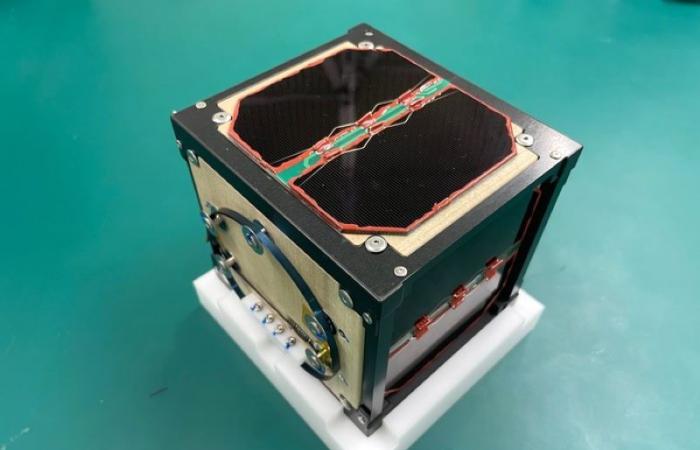
LignoSat, the world’s first wooden satellite, was launched into space during SpaceX’s 31st International Space Station resupply mission ( ) on November 4, 2024. The satellite was created by researchers and students from the Kyoto University in collaboration with Sumitomo Forestry as part of the LignoStella (space wood) project. The aim was to study the use of more environmentally friendly woods to help reduce the production of unhealthy metal particles in the atmosphere during the re-entry of end-of-life satellites.
Hinoki wood (Japanese cypress, Chamaecyparis obtuse) from forests owned by Sumitomo Forestry Monbetsu was used for the body of the LignoSat. A traditional assembly method called “Tomega Kakushi Ariku Mitsugi” which uses no metals or glues, was used to assemble the wooden body, while the outer edges were reinforced with an aluminum frame. Electronics, solar panels and antennas were then added to the 1U CubeSat-sized satellite.
The LignoSat has undergone numerous tests during its four years of development, notably with regard to the degradation of wood in space ( ), radio frequency emissions and wear resistance of radio frequency emissions and of spaceflight safety. Once docked with the ISS, the LignoSat will remain inside the JEM Small Satellite Orbital Deployer (J-SSOD) for a period of time, before being ejected from the ISS for a period of time, before being ejected in space for a six-month mission. This mission will test the ability of wood to withstand space conditions and block radiation from space.
For radio amateurs, the LignoSat satellite is equipped with two dipole antennas capable of receiving and broadcasting radio signals. Operators can send an FM message to the satellite with their call signs and then receive decoded CW messages containing the call signs and SSIDs. Additionally, messages such as those encoded QTH will be decoded and then uploaded over an FM downlink for display on the project website.
Readers interested in building a real CubeSat to launch into space can read NASA’s paper “CubeSat 101.” Model building enthusiasts can purchase a CubeSat kit on Amazon.
Belgium





